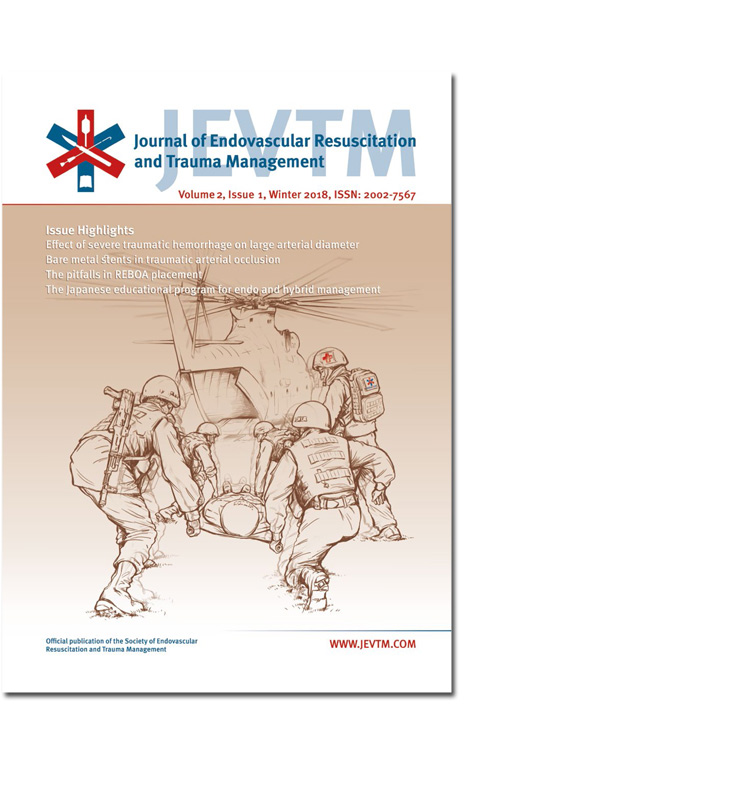Bare Metal Stents Can Maintain Arterial Patency in Traumatic Occlusion
DOI:
https://doi.org/10.26676/jevtm.v2i1.34Keywords:
Arterial Trauma, Trauma Surgery, Endovascular Trauma Management, Bare-Metal Stent, Vascular SurgeryAbstract
Background: The standard approach to an occlusive vascular injury is open arterial reconstruction, although endovascular stenting is becoming more common, despite limited evidence. The aim of this study is to examine whether bare-metal stents can be effective in an ovine model of occlusive arterial trauma.
Methods: Through a groin incision, a 2-cm segment of the left superficial femoral artery (SFA) was bluntly injured using a hemostat and injection of air to achieve thrombosis. Animals then underwent a stent deployment (stent group, n = 5) or no-treatment (control group, n = 5). In the stent group, recanalization of the thrombotic lesion, thromboaspiration, and bare-metal stent deployment were performed. Enoxaparin 1.5 mg/kg was given to all animals. The stent group animals were fed clopidogrel 75 mg and aspirin 125 mg daily. Angiography and Doppler ultrasound were used to evaluate arterial patency during the 7-day observation period.
Results: A thrombosis was obtained in all cases. After a fall in the systolic velocity (SV, cm/sec) in both the control (43 (36–56) to 6 (0–16); P < 0.001) and stent groups (45 (32–53) to 8 (0–12); P < 0.001), stent implantation resulted in a significant permanent increase of the SV. Day 7 angiography confirmed SFA patency in all (5/5) stented animals, with persisting occlusions in the control group (P = 0.008). There was no evidence of distal emboli in the run-off arteries.
Conclusions: Bare-metal stent implantation restores arterial patency of a traumatic occlusive lesion in a standardized ovine model with a short follow-up period.
Published
How to Cite
Issue
Section
License
Copyright (c) 2018 Journal of Endovascular Resuscitation and Trauma Management

This work is licensed under a Creative Commons Attribution 4.0 International License.
Authors of content published in the JEVTM retain the copyright to their works.
Articles in the JEVTM are published under the terms of a Creative Commons CC BY 4.0 license, which permits use, downloading, distribution, linking to and reproduction in any medium, provided the original work is properly cited.




